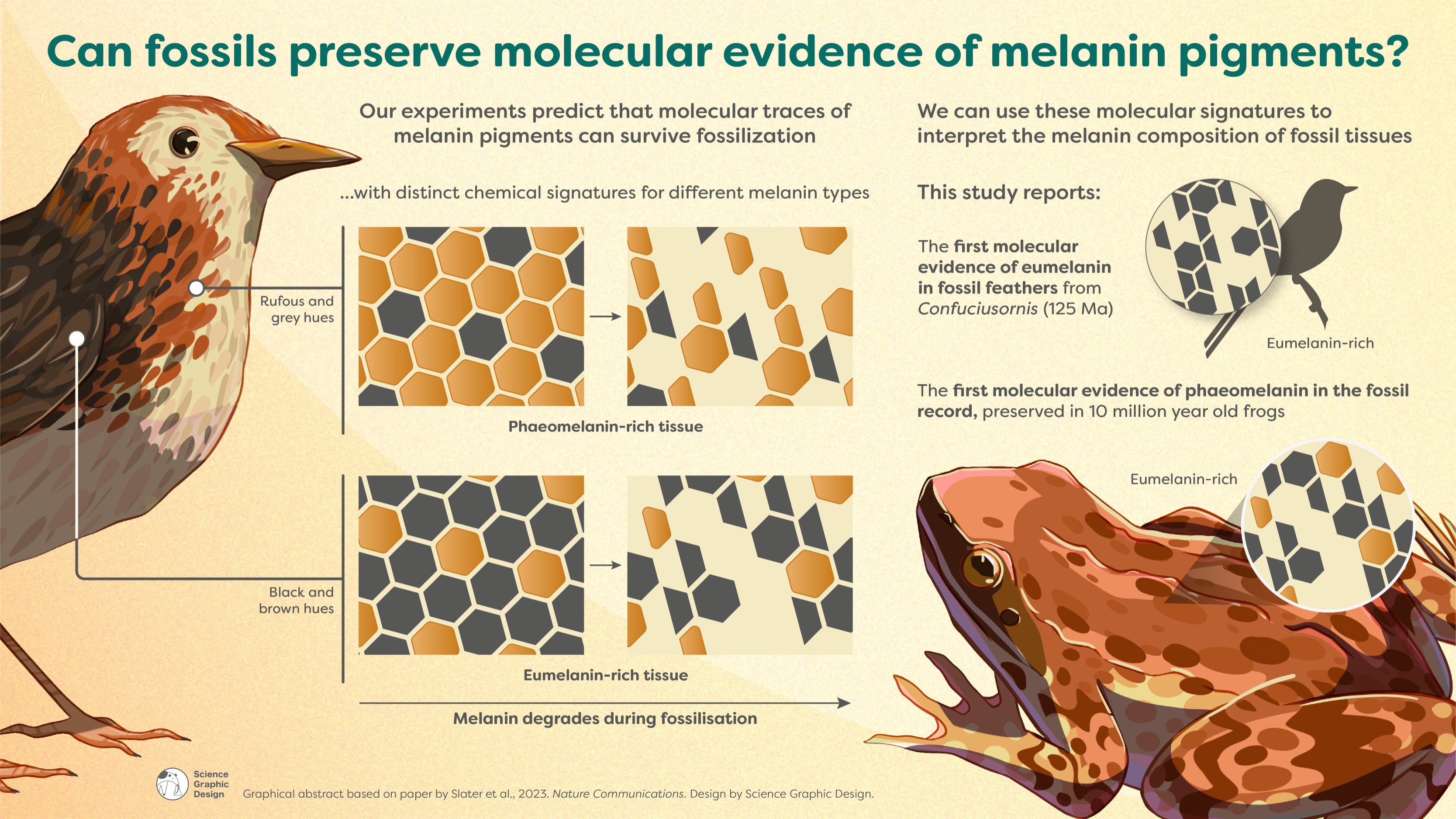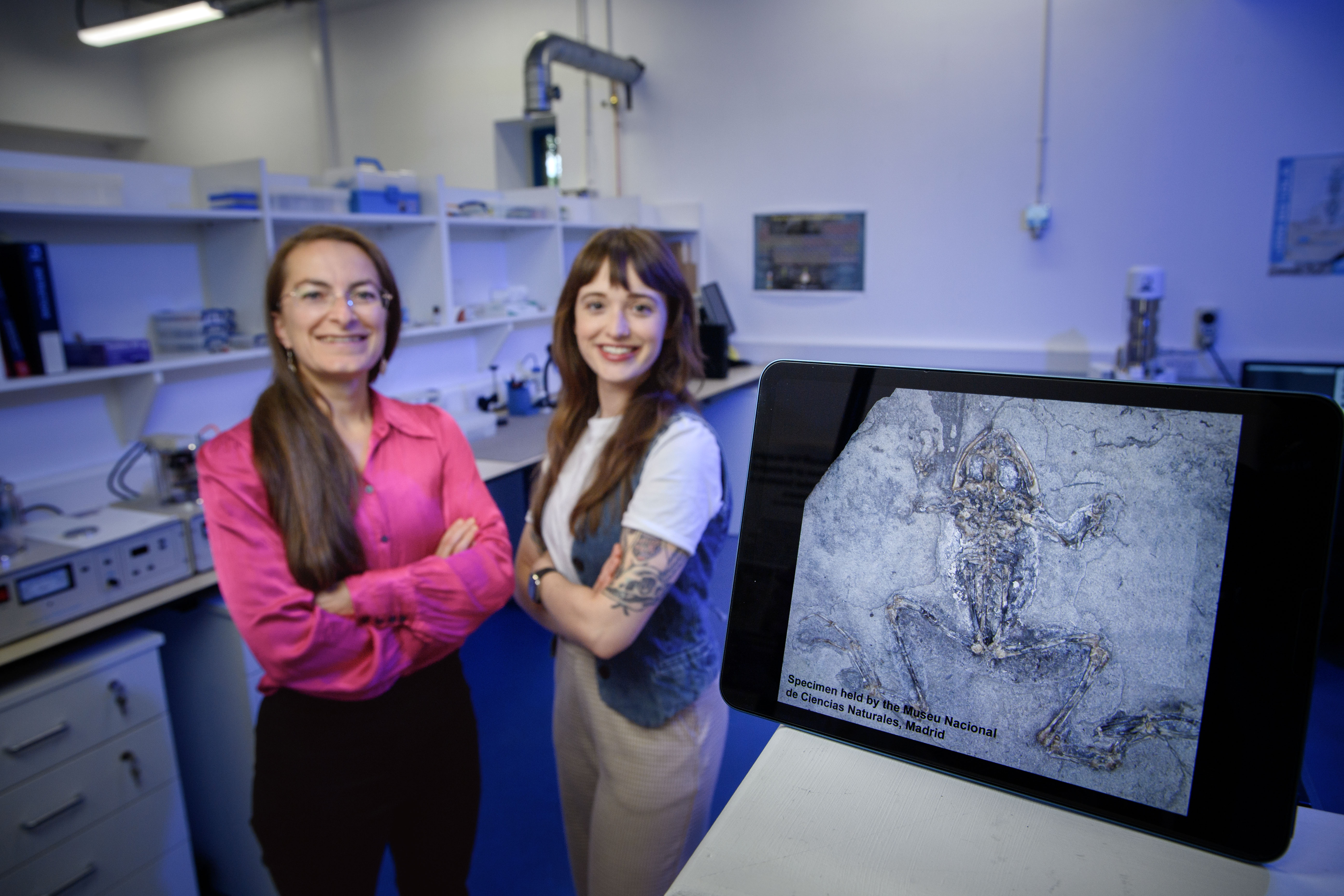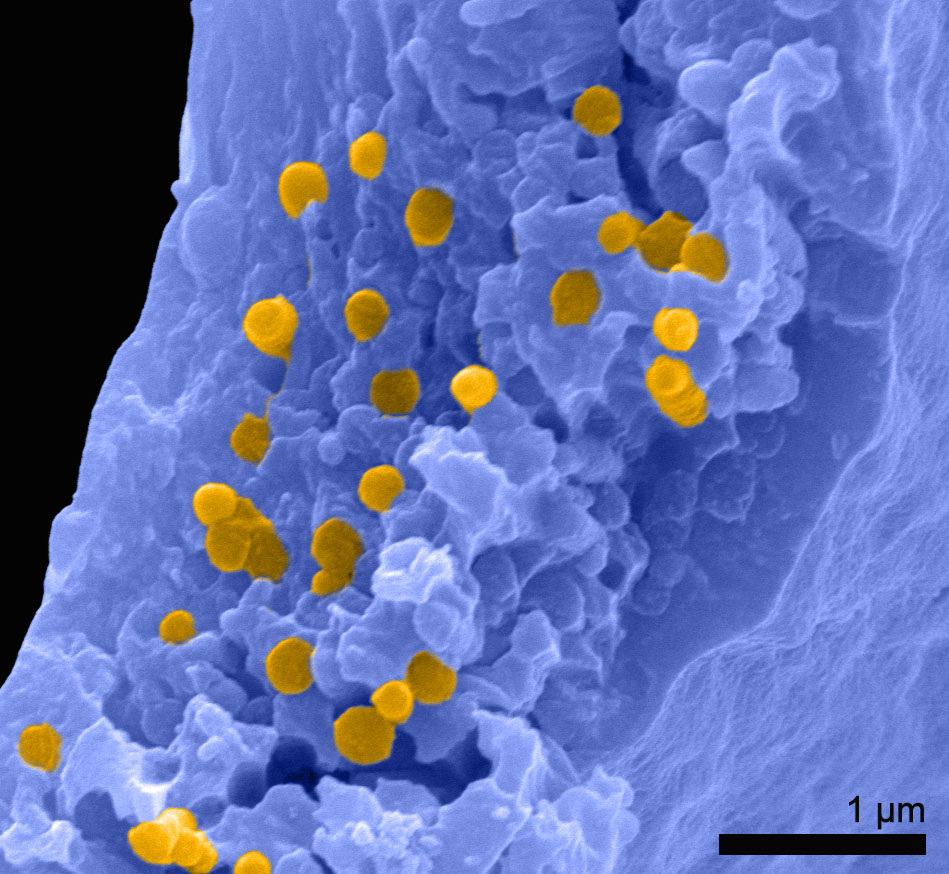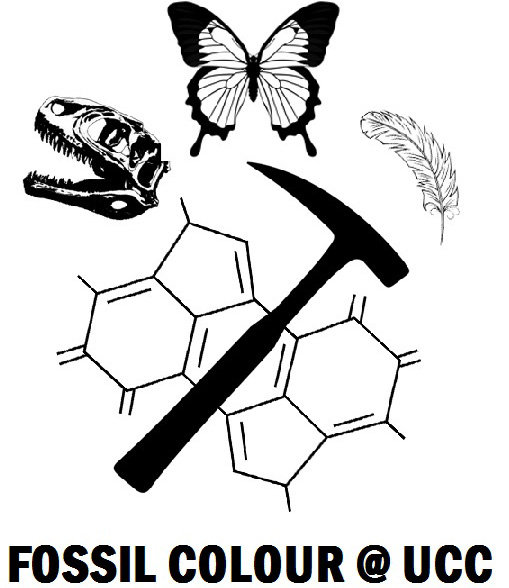News
Tiffany's findings on ginger pigments in fossil record published in Nat Comms!

This paper reports the first molecular evidence of ginger pigments in the fossil record, which were found in 10 million-year-old frogs.
Ginger pigment molecules found in fossil frogs
- UCC palaeontologists discover molecular evidence of phaeomelanin, the pigment that produces ginger colouration.
- “This will paint a more accurate picture of ancient animal colour.”
- Phaeomelanin is now toxic to animals – discovery may be first step in understand its evolution.
Palaeontologists at University College Cork (UCC) have found the first molecular evidence of phaeomelanin, the pigment that produces ginger colouration, in the fossil record.
The new study reports the preservation of molecular fragments of the pigment phaeomelanin in 10-million-year-old frogs, adding molecular analysis to the palaeontologists’ arsenal when reconstructing the original colours of extinct organisms.
The study, published today in Nature Communications, was led by UCC palaeontologists Dr Tiffany Slater and Prof. Maria McNamara, who worked with an international team of scientists at Fujita Health University (Japan), Linyi University (China) and Lund University (Sweden).
Dr Slater said:
“This finding is so exciting because it puts palaeontologists in a better place to detect different melanin pigments in many more fossils.
“This will paint a more accurate picture of ancient animal colour and will answer important questions about the evolution of colours in animals. Scientists still don’t know how – or why – phaeomelanin evolved because it is toxic to animals, but the fossil record might just unlock the mystery.”
The team performed rigorous laboratory experiments on black, ginger, and white feathers to track how phaeomelanin pigments degrade during the fossilisation process, which backs up their interpretations of the fossil chemistry.
Prof. McNamara, senior author on the study, said:
“Fossils are invariably altered by the ravages of heat and pressure during burial, but that doesn’t mean that we lose all original biomolecular information. Our fossilization experiments were the key to understanding the chemistry of the fossils, and prove that traces of biomolecules can survive being cooked during the fossilization process. False colour scanning electron microscopy image of zebrafinch feather showing the feather cortex (in blue) and melanosomes (melanin-rich granules, in orange). Scale bar indicates 1 µm. Pic Dr Tiffany Slater.
False colour scanning electron microscopy image of zebrafinch feather showing the feather cortex (in blue) and melanosomes (melanin-rich granules, in orange). Scale bar indicates 1 µm. Pic Dr Tiffany Slater.
“There is huge potential to explore the biochemical evolution of animals using the fossil record, when we account for chemical changes during fossilization.”
The paper can be accessed at:
Slater, T.S., Ito, S., Wakamatsu, K., Zhang, F., Sjövall, P., Jarenmark, M., Lindgren, J., McNamara, M.E., 2023. Taphonomic experiments reveal authentic molecular signals for fossil melanins and verify preservation of phaeomelanin in fossils. Nature Communications, 14, 5651. DOI: https://doi.org/10.1038/s41467-023-40570-w.
DOWNLOAD THE PDF HERE: Slater_et_al_2023_Nat_Comm_phaeomelanin.pdf
Contact details for lead author: Tiffany.Slater@ucc.ie
Please see news items related to the article below:
RTÉ Radio One interview on Mooney Goes Wild (@ 37m)
Newstalk interview on Futureproof with Jonathan McCrea (@ 1m 30s)


